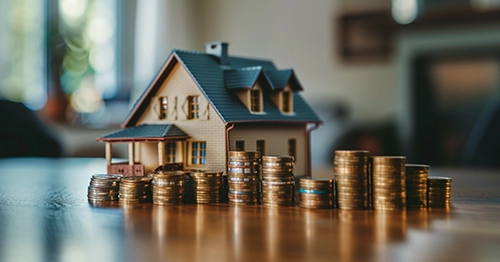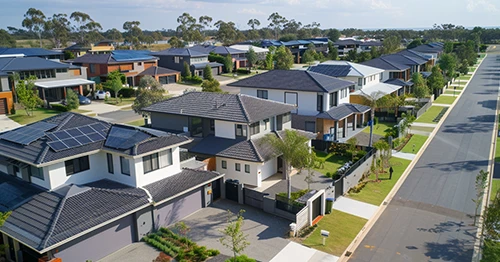Updated: 29 May, 2025
Whether you’re upsizing, downsizing or just moving to a home in a new location, no doubt things have changed since buying your last home.
There are a number of home loan options available when you’re moving on to your next property so how do you get from one home to the next?
The ideal way to do it, financially speaking, is to sell your existing home first.
In this way, you’ll know exactly how much money you can spend on your next home and how much you’ll need to borrow. It will also put you in a good position with potential lenders for your next home loan.
But life isn’t always that straightforward.
What is a bridging loan?
If you can’t sell your existing home first for some reason, you might want to consider a bridging loan, which gives you access to funds to buy your new home before you’ve sold your current one.
There are generally two types of bridging loans: closed bridging loans and open bridging loans.
Closed bridging loans are available to borrowers who have already locked in the sale of their existing property and know when it will settle. These are usually short-term arrangements.
Open bridging loans are used when the existing property has not yet been sold and these can be arranged for up to 6 months.
How does this type of mortgage work?
A bridging loan requires the lender to work out the size of the total loan by adding the value of your new home to your existing mortgage, then subtracting the likely sale price of your existing home.
This requires a valuation by the bank, which will cost approximately $200 for each property.
Typically, you pay interest only on the entire loan amount until the first property is sold and the principal is repaid in full.
Bridging loans are sometimes structured so you only make principal and interest repayments on the loan until settlement, capitalising the interest due on the rest of the loan.
Either way, once you have sold your existing property, the loan reverts to an ordinary home loan.
The pros of bridging loans
- You won’t miss out on your ideal property.
- If you want to build your next home, you can stay in your existing property until the new one is completed.
- You won’t have to worry about matching up settlement and move-in dates.
- You may achieve a better price for your existing property without the pressure of having to sell immediately, particularly in the current selling environment.
- You can avoid the costs of renting while you’re between homes and paying the movers twice.
The cons of bridging finance
- During the bridging period, you’ll have two loans that are accruing interest.
- Both properties will have to be valued by the lender – which could be costly.
- The longer it takes to sell your existing home, the more interest you’ll pay, as the interest is compounded monthly.
- If you don’t sell your current home within the bridging period, you could be required to pay a higher interest rate to continue.
- You’ll need at least 20% of the total value of both properties (either in cash or equity in your existing property) to qualify for a bridging loan.
What if a bridging loan doesn't work me?
- Sell first: This is suitable if you have little to no equity or if your property may take some time to sell.
- Buy first: This is suitable if you have significant equity (you can use a line of credit facility) and a strong enough income to hold both properties.
- Buy first with a guarantor loan: This is suitable if you have little to no equity, a strong enough income to hold both properties and your parents are willing to put up their property as additional security for your loan.
- Simultaneous settlement: This is suitable if you can arrange both the purchase and the sale to settle on the same day. Often, you’ll need to have excellent negotiation skills or a great mortgage broker and solicitor to make this work.
Have you considered holding off selling?
With some markets around Australia experiencing a ‘correction’ at present, it could be a good idea to keep your current property as an investment and sell it on when the market recovers.
Call us on 1300 889 743 or complete our online enquiry form to discover which option is right for you.
This article originally appeared in Connective eNews and has been reprinted with permission. To know more about Connective, visit the website at www.connective.com.au.





